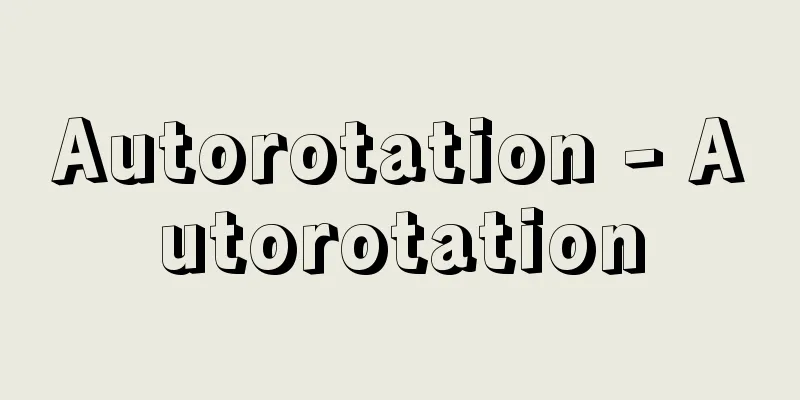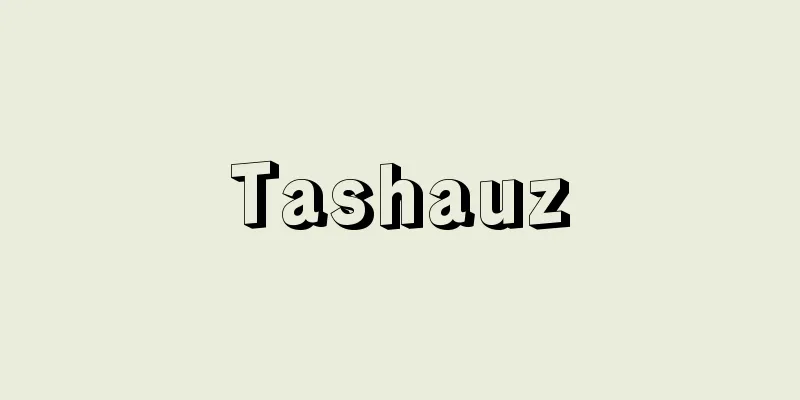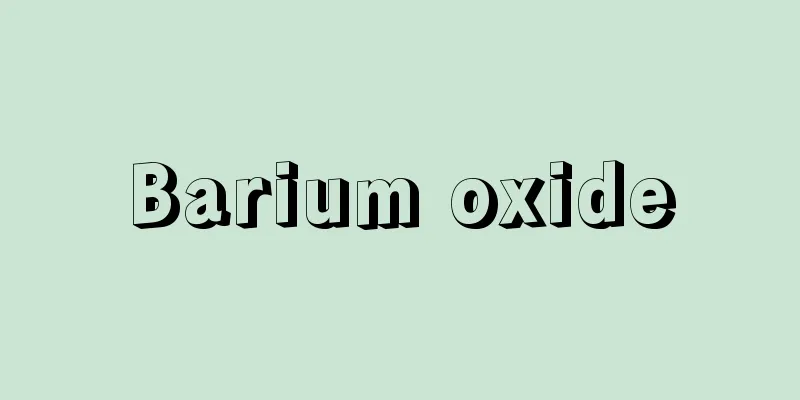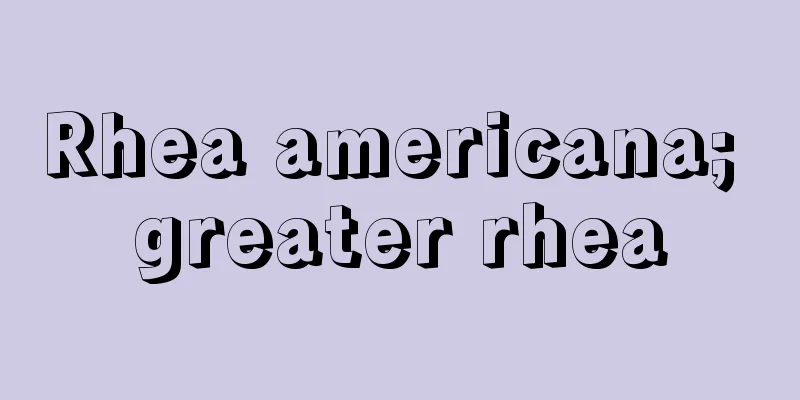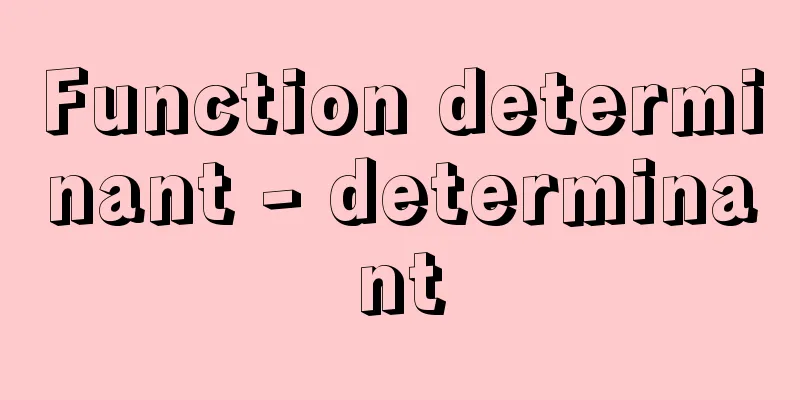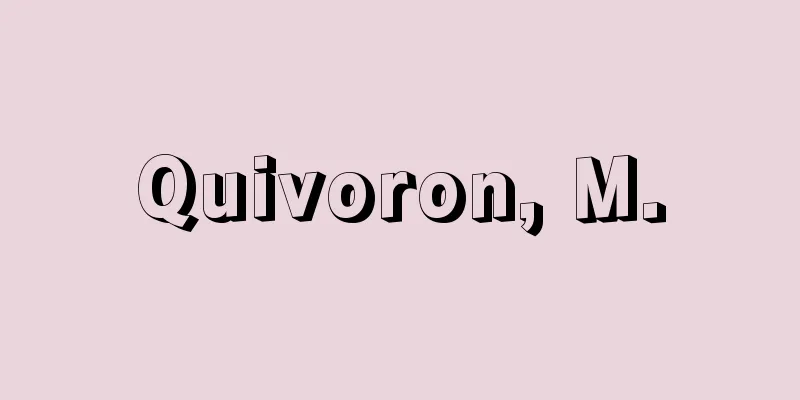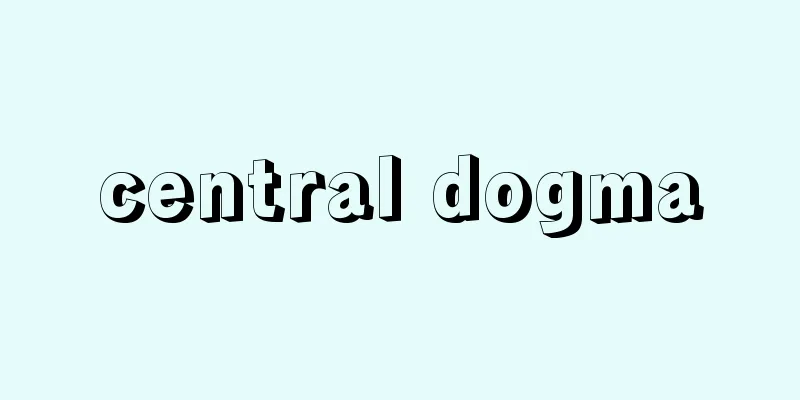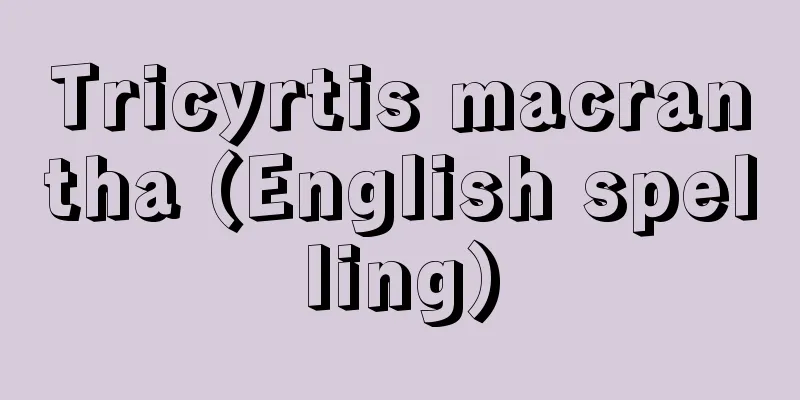Concept learning

|
In a narrow sense, it refers to the learning process of identifying the connotation of a model stimulus that represents a concept and making a correct assimilation. In a broad sense, it refers to the process of searching for essential features similar to environmental phenomena, finding a conceptual structure, and recognizing the order of the environment. Therefore, it is also called concept formation. Concept learning has great adaptive significance in that it produces functional behaviors that can be applied to diverse but common situations that cannot be achieved by stimulus generalization, through limited learning opportunities. Experimental research on concept learning in animals was once a central topic in thinking psychology and learning psychology. One example is the experiments conducted by Hull, CL (1920), a leading authority on behaviorist learning research. As shown here, early research on concept learning was inspired by the definition of concepts in classical logic, and the results are summarized in Tatsuro Yatabe's Thinking Psychology 1: Concepts and Meanings (1947), but because it was conducted under the theoretical constraints of classical logic, it was unable to go beyond its limitations. In recent years, the theory of "concepts" itself has been reconsidered, and empirical research on humans has become extremely difficult within the traditional framework of the past, so the focus has shifted to comparative psychological research. These studies also shed light on human conceptual learning from an indirect perspective. [Subjects of concept learning] There are a variety of concepts that are the subject of research. Concepts based on common physical attributes between examples are called natural concepts or object concepts. Zentall, TR et al. (2008) call them perceptual concepts. In reality, few natural concepts are based on simple common attributes, and most are thought to be polymorphic concepts, as described below. When each example consists of multiple stimuli that share a common relationship, it is called a relational concept. For example, a set of stimulus pairs in which the relationship between the two stimuli is parent-child is an example of this. In research involving animals, the relationship between same and different has been the most commonly used. If some of the properties of each instance are present, it may be considered a positive instance of the concept in question. For example, consider the concept of a "desk." A typical desk has characteristics such as a flat top, a rectangular shape, waist-high height, and four legs. However, in some cases, desks with protrusions or depressions, round desks, and desks with six legs are also called desks. In other words, if some of the attributes that define a desk are present, it is considered a positive instance of the concept in question. Concepts like this are called polymorphous concepts. There are concepts that are defined only by extension. Suppose students in a class are randomly selected and divided into two groups, A and B. The students in each group do not share any defining attributes, but only share the function of being called by the same name. This type of concept is called a functional concept. In the above-mentioned review by Zenthall et al., it is called an associative concept. [Comparative psychological study of conceptual behavior] 1. Natural Concepts Herrnstein, RJ, et al. (1964) presented pigeons with a slide projector with and without pictures of humans, one at a time. When a human was present, the response of pecking the key below it was occasionally reinforced on a variable interval (VI) schedule. When no human was present, the key-pecking response was eliminated. The humans in the pictures were diverse in terms of number, race, size, sex, and clothing. With continued training, the pigeons began to peck the key only when pictures of humans were presented. Since the pigeons may have only reacted to simple characteristics such as skin color, they tested the pictures in black and white, but the pigeons' reactions did not change at all. It seems that the cue for the reaction was not color, but the somewhat more complex shape of the human figure. From this, Herrnstein et al. concluded that the pigeons had formed the concept of "human." Starting with this experiment, pigeons have been shown to learn concepts such as trees, water, certain people (Herrnstein, et al., 1976), fish (Herrnstein & de Villiers, PA, 1980), the letter A (Morgan, MJ et al., 1976), paintings by Picasso and Monet (Watanabe, S. et al., 1995), and classical and modern music (Porter, D., & Neuringer, A., 1984). Rhesus monkeys have learned concepts of rhesus monkeys (Yoshikubo, S., 1985), concepts of trees and fish (Vogels, 1999), and dogs have learned concepts of dogs (Range, F. et al., 2008). Although the formation of various concepts has been suggested, it is difficult to conclude what cues these behaviors are based on and whether they are equivalent to the same concepts held by humans. D'Amato, MR et al. (1988) trained tufted capuchin monkeys to form the concept of humans, and when they analyzed their errors, they found that the monkeys classified red areas as "human" regardless of whether the example was positive or negative. However, there are so many features and dimensions that describe natural stimuli that such an investigation is not easy. It is believed that natural concepts are easier when the stimulus group that is the subject of training matches the segmentation of the environmental stimuli that the animal has. Conversely, this can be applied to analyze the classification and segmentation of the environmental stimuli of the animal. For example, Roberts, WA et al. (1988) compared the learning process of concept formation tasks with different levels of abstraction between humans, squirrel monkeys, and pigeons. Humans formed highly abstract concepts, such as birds opposed to other animals and animals opposed to inanimate objects, more quickly than concrete concepts, such as kingfishers opposed to other birds. However, pigeons found concrete concepts easier and showed stronger generalization to novel stimuli. Interestingly, monkeys had the most difficulty with the intermediate level of animals versus birds. This indicates that the level of abstraction that is most easily formed varies depending on the animal species. Vonk, J. et al. (2002) used a single gorilla to compare concrete concepts such as humans versus gorillas or orangutans with intermediate-level concepts such as primates versus non-primates, and highly abstract concepts such as food versus animals or food versus non-animals. In this study, intermediate-level concepts were also the most difficult to form. On the other hand, when a similar experiment was conducted with six orangutans, no learning difficulties were observed even in the primates versus non-primates category (Vonk & McDonald, SE, 2004). The cues that must be abstracted differ depending on the level. At the concrete level, learning perceptual features is sufficient. As the level of abstraction increases, higher-level cognitive features of the example must be used as cues. The types of cognitive features that are important differ depending on the species. This is thought to be the reason why species differences appear in the ease of forming concepts at a certain level of abstraction or higher. How animals categorize and segment environmental stimuli can also be determined by analyzing the animals' innate response tendencies. For example, Sands, S. F. et al. (1982) trained rhesus monkeys to press one lever if two pictures were the same and the other if they were different. The stimuli used were a variety of photographs of human faces, monkey faces, trees, flowers, and fruits. It is thought that monkeys perceive stimuli in the same category as similar to each other, so it is likely that they will make many mistakes in answering "same" when combining these stimuli. After analyzing the resulting confusion errors and using multidimensional scaling (MDS) to obtain a two-dimensional arrangement, it was found that human faces and monkey faces, and trees and flowers each formed the same cluster. Kazuo Fujita and his colleagues showed chimpanzees a variety of pictures on slides. When the chimpanzee touched the touch key, a picture was presented, and when the chimpanzee released it, it disappeared. If the chimpanzee touched the key again within 10 seconds of releasing it, the same picture could be viewed as many times as the chimpanzee wanted, but if 10 seconds had passed since releasing it, the next picture was set, and when the chimpanzee next touched the key, that picture was presented. When the chimpanzee's response was analyzed, when the picture contained a human, the chimpanzee pressed the key for a longer period of time and at shorter intervals than when the picture did not contain a human (Fujita & Matsuzawa, T., 1985). In other words, even without concept formation training, it can be said that for chimpanzees, "humans" were originally a stimulus that produced a certain group of common responses. When only stimuli of the same sensory modality are used, it is difficult to clearly distinguish between conceptual behavior and stimulus generalization. In recent years, studies have been conducted on concepts that integrate multiple sensory modalities. Physical similarity cannot be assumed between stimuli of different sensors, such as images and sounds. Kazuhide Hashiya tested a chimpanzee that had acquired intersensory matching to sample, which involves selecting corresponding pictures for human voices and sounds made by objects, to see if it could select corresponding pictures for various sounds in novel categories, chimpanzees and birds. The chimpanzee quickly showed good performance for chimpanzee sounds (Hashiya, K., 1999). This may indicate that chimpanzees associate sounds of their own species with visual images that are not physically similar, but it is not conclusive evidence because performance with bird stimuli remained at chance level. On the other hand, Adachi Ikuma and his colleagues used the expectancy violation method to investigate dogs' recognition of their owners. After the dog was presented with a voice in which the owner or an unknown person called the dog's name several times, a photograph of the owner's or an unknown person's face was presented on a monitor and the gaze time was measured. The gaze time was longer when the voice and the photograph did not match, and was particularly long when a photograph of an unknown person appeared after the owner's voice. This is thought to indicate surprise (expectation violation) on the part of the dog. In other words, the dog was able to recognize the relationship between the voice and the image without any specific training and was expecting a specific image from the voice (Adachi, et al., 2007). 2. Concept of Relations Most of the concepts of relations that have been examined in animals are the same-different relation. Early studies were conducted on primates, and mainly used the isolated-item oddity problem (Moon, LE, & Harlow, HF, 1955; Spaet, T. & Harlow, 1943), in which participants had to choose one object that was different from the others among three or more objects. By training with a large number of objects in succession, monkeys can learn to choose the only object that is different from the beginning even in novel object combinations (rhesus monkeys: Levine, M. & Harlow, 1959; white-faced capuchin monkeys, common squirrel monkeys: Thomas, RK, & Boyd, MG, 1973; and others). Since the 1960s, many studies using matching to sample and its derived tasks have been conducted mainly on pigeons (Carter, DE, & Werner, TJ, 1978). The question was what animals learn in matching to sample tasks. Comparative studies using various tasks have concluded that what pigeons learn in this task is not a general rule that corresponds to the concept of sameness and difference, such as "select the same comparison stimulus as the sample," but an individual rule specific to the sample stimulus, such as "if the sample is X, select comparison stimulus X," and that the number of rules determines the speed of learning. In other animal species, it is rare for a response based on sameness and difference to be learned from matching to sample of a small number of stimuli. Although there have been positive reports in chimpanzees (Oden, DL et al., 1988), it is concluded that the relationship between sameness and difference is not easily abstracted in animals other than humans. However, in recent years, it has been shown that generalization to novel stimuli occurs in many animals, including pigeons, if training is repeated with different stimuli, as in the case of the isolated term task learning set. Wright, AA et al. (2006) trained three species of animals, rhesus monkeys, capuchin monkeys, and pigeons, to respond to the lower photo when two photos arranged one above the other are the same, and to the gray shape on the side when they are different (same/different discrimination task). They first trained the animals using eight photos, and then continued training by doubling the number of stimuli each time. At first, no generalization to novel stimuli was observed, but when the number of stimuli was increased to 128 in monkeys and 256 in pigeons, almost complete generalization was observed. Wright et al. believe that at least among these three species, there is no qualitative difference in the formation of the same/different concept, but only a quantitative difference in the speed at which it occurs. In addition, a task has been studied in which a large number of stimuli, such as computer icons, are assigned as two responses, either uniform or dissimilar, rather than as the sameness or difference of two stimuli. In this case, a continuous quantity in the sameness/difference dimension, ranging from all the same to all the different, can be considered. Wasserman, EA et al. (1995) calculated this as entropy (disorder). When pigeons are given the task of assigning such stimuli as "same" or "different," the response "same" remains constant regardless of the total number of stimuli, but the response "different" decreases as the total number of stimuli decreases. Based on this, they claim that for pigeons, the relationship between "sameness" and "difference" is a continuous dimension that changes according to entropy. Similar trends have been observed in guinea baboons (Wasserman, et al., 2001) and in some humans (Young, ME, & Wasserman, 2001). As an even higher level concept of sameness and difference, we can consider the concept of sameness and difference in the "relationship of relations." For example, the relationship AA and the relationship BB are "same" in that they are "same." AB and CD are "same" in that they are "different." On the other hand, the relationship between AB and CC is "different." There are few examples of these second-order relational concepts in animals, but Cook, RG, and Wasserman (2007) claim that animals can also form the concept of the "relationship of relations," because the matching-to-sample task based on whether uniformity or non-uniformity is the same or different, as described above, can be learned by pigeons and guinea baboons, and the concept generalizes to novel icons. However, doubts remain as to whether characteristics such as uniformity or non-uniformity are relations in the first place. On the other hand, Gillan, DJ et al. (1981) tested whether a chimpanzee named Sarah, who had been trained in an artificial language, could respond based on the sameness or difference of analogical relations. This was a quadratic relation, such as the relation between A and A' being the same as the relation between B and B'. Boards of various sizes, colors, and patterns were used. For example, a large black triangle was placed on the top left of a tray, and a small black triangle on the bottom left. A large white circle with a black dot was placed on the top right. In the center was a piece of plastic that meant "same," and the bottom right was blank. The chimpanzee had to choose from separately provided boards a board that would make the relationship between the top and bottom figures the same on the left and right. In this problem, the correct answer was to select a small white circle with a black dot from among several test figures. Sarah generally got the answers right the first time. Regarding the functions of everyday objects, for example, in problem A on the left side of the figure, a lock was placed in the upper left corner of a tray, a key in the lower left corner, a symbol indicating "same" in the center, and a can of paint in the upper right corner. When a can opener and a brush were given as options as shown in the bottom row, Sayla chose the can opener. Both are the objects at the bottom and have the same relationship of "opening" the object at the top. In another trial, when paper and pencil were placed on the left side as in problem B on the right side of the figure, from the same options, the chimpanzee chose the brush. They have the same relationship of "drawing." Her performance in this task was above chance level from the start. It appears that chimpanzees are capable of conceptual behavior that uses second-order relationships, such as the relationship of relationships, as a clue. 3. Polymorphic Concepts The table shows positive and negative examples of polymorphic concepts. These eight examples are a 2x2x2 combination of "monkey" or "crab," hiragana or katakana, and Ming or Gothic font, and positive examples are defined as those that satisfy two or more of the three factors of "monkey," katakana, and Ming font. The second from the left in the top row is a typical positive example in which all three factors are satisfied. The second from the left in the bottom row is a typical negative example in which none of the three factors are satisfied. A polymorphic concept defined in such a way that m out of n conditions (m < n) are satisfied is here described as an m/n polymorphic concept. A polymorphic concept is somewhere between a conjunction concept (AND concept) in which all conditions are satisfied and a disjunction concept (OR concept) in which any of the conditions are satisfied, and it is considered extremely difficult for humans to form such a concept. Lea, SJ et al. (1978) were the first to investigate the process of artificial polymorphism in animals. They used eight types of stimuli, combining two background colors (green, red) × two figures (circle, triangle) × two figures colors (black, white). One of the factors was determined to be a positive feature, and 2/3 polymorphism concepts were defined. The stimuli were presented on the left key of two keys. Under specific learning conditions, pigeons correctly classified unseen stimuli based on the polymorphism rules. Similar findings were observed when stimuli and procedures were changed (Lea & Harrison, SN, 1978; Jitsumori, M., 1993). They were also confirmed in Guinea baboons (Dépy, D. et al., 1997) and rhesus monkeys (Jitsumori, 1994). On the other hand, humans did not generalize to typical cases in the same task (Dépy, et al., 1997; Jitsumori, 1993). Humans appear to solve this task by creating very complex logical rules, whereas detailed analysis has revealed that animals solve this task with a simpler strategy, such as memorizing combinations of several elements (Jitsumori, 1996). In other words, the learning of polymorphic rules has not yet been clearly demonstrated in animals. 4. Functional Concepts Functional concepts in animals have been examined mainly in two ways. One is to use many-to-one matching to sample, in which the pigeons are asked to select a common comparison stimulus for multiple sample stimuli. Urcuioli, PJ et al. (1989) trained pigeons to select vertical bars → large bars and horizontal bars → small bars, in addition to red → large circles and green → small circles. In this case, the formation of this functional concept can be tested by examining whether red and vertical bars and green and horizontal bars form categories. To do this, it is necessary to examine whether new training such as red → blue and green → white generalizes to vertical bars → blue and horizontal bars → white, and so on. In the test, many pigeons responded according to such emergent relationships. Vaughan, W., Jr. (1988) randomly divided a number of tree photographs into two sets, A and B, and trained pigeons to reinforce key pecking only under the positive stimuli on a variable interval (VI) schedule. Once the pigeons had mastered this, the positive and negative stimuli were reversed. When this was repeated, the pigeons began to respond correctly after the first few trials of the session. This indicates that the two arbitrary groups of stimuli became equivalent stimulus categories with a common function of positive or negative. In other words, this type of training showed that pigeons could form functional concepts. Another method is the formation of a relationship called stimulus equivalence. Sidman, M. et al. (1982) formulated a paradigm called stimulus equivalence using a symbolic matching-to-sample task. They proposed that stimulus equivalence is demonstrated by the formation of the following three inter-stimulus relations: (1) reflexivity, which means that generalized identity matching to sample can be achieved; (2) symmetry, which means that training A → B automatically creates B → A; and (3) transitivity, which means that training A → B and B → C automatically creates A → C. The formation of inter-stimulus relations that have all three of these is easy in humans (Adams, BJ et al., 1993), but difficult in other animals. Exceptions include California sea lions (Schusterman, RJ, & Kastak, D., 1993) and chimpanzees (Yamamoto, J., & Asano, T., 1995). The main reason is that it is difficult to establish symmetry. In symbolic matching to sample, animals learn associations between stimuli that have a directionality of sample → comparison stimulus. Since this is logically correct, it can be said that the ability to quickly learn symmetry is an illogical peculiarity of humans. → Evolution of memory → Stimulus equivalence → Discrimination learning → Matching to sample [Kazuo Fujita] (Gillan, et al., 1981) Figure Analogical models based on the functions of everyday objects "> Table Examples of polymorphic concepts Latest Sources Psychology Encyclopedia Latest Psychology Encyclopedia About Information |
|
狭い意味では,概念を示すモデル刺激の内包を識別し,正しい類同化を行なう学習過程を指す。広い意味では,環境事象に類似する本質的な特徴を探索して概念構造を見いだし,環境秩序を認知する過程を指す。したがって,概念形成concept formationともいう。概念学習には,限られた学習の機会によって,刺激般化では及ばない,多様な,しかし共通性をもった状況に応用可能な機能的行動を作りだすという大きな適応的意義がある。動物を対象とする概念学習の実験的研究は,かつては思考心理学や学習心理学の中心課題であった。行動主義的学習研究の大家であるハルHull,C.L.(1920)が実験を行なったことなどがその一例である。ここに示されるように,初期の概念学習の研究は古典論理学的な概念の定義から発想されたものであり,その成果は矢田部達郎の『思考心理学1 概念と意味』(1947)などに総括されているが,古典論理学の理論的制約下に行なわれたために,その限界を出ることができなかった。近年,「概念」そのものの理論的見直しが行なわれるとともに,人間についての実証的研究もかつてのような伝統的枠組みのもとではきわめて困難となり,むしろ比較心理学的研究に焦点が移っている。これらは,人間の概念学習についても側面から光を当てるものである。 【概念学習の対象】 研究対象となる概念には多様なものがある。事例間の物理的共通属性に基づくものを,自然概念natural conceptあるいは物の概念object conceptとよぶ。ゼントールZentall,T.R.ら(2008)は,知覚的概念perceptual conceptとよんでいる。実際の自然概念は,単純な共通属性に基づくものは少なく,その多くは後述の多型概念であると考えられる。 各事例が複数刺激からなっており,それらの関係が共通している場合は,関係の概念relational conceptとよぶ。たとえば二人の関係が親子である刺激対の集合などがそれに当たる。動物を対象にした研究で,最も多く扱われてきたのは,同異same/differentの関係である。 各事例がもつ複数の性質のうち,いくつかがそろっていれば,当該の概念の正事例とされる場合がある。たとえば「机」の概念を考えよう。典型的な机には,上面が平らで,長方形で,高さは腰くらい,脚は4本,などの特徴がある。しかし,場合によっては出っ張りや凹みがあるもの,丸いものや,6本脚のものも,机とよばれる。つまり,机を規定する属性のいくつかがそろえば,当該概念の正事例とみなされる。こうした概念を多型概念polymorphous conceptとよぶ。 概念には,外延だけで定義されるものがある。あるクラスの生徒をでたらめに一人ずつ指名して二つの班A,Bに分けたとしよう。各班に入れられた生徒の中になんらかの定義的属性があるわけではなく,同じ名称でよばれるという機能だけが共通している。このような概念を機能的概念functional conceptとよぶ。前記のゼントールらの総説では,連合的概念associative conceptとよばれている。 【概念的行動の比較心理学的研究】 1.自然概念 ハーンスタインHerrnstein,R.J.ら(1964)は,ヒトの写っている写真と写っていない写真を多数用意して,ハトにスライドプロジェクタで1枚ずつ呈示した。ヒトが写っている場合には,その下のキーをつつく反応が変動間隔(Ⅵ)スケジュールで時折強化された。ヒトが写っていないときには,キーつつき反応は消去された。写っているヒトは,人数,人種,大きさ,性別,衣服などの面で多様であった。訓練を続けると,ハトはヒトの写っている写真が呈示されたときだけ,キーつつきをするようになった。ハトは肌の色といった単純な特徴に反応しただけかもしれないので,写真を白黒にしてテストしたが,ハトの反応はまったく変わらなかった。色ではなく,もう少し複雑なヒトの姿かたちが,反応の手がかりになっていたものと思われる。このことからハーンスタインらは,ハトが「ヒト」の概念を形成したと考えた。 この実験を皮切りに,ハトでは,木,水,特定のヒト(Herrnstein,et al.,1976),サカナ(Herrnstein & de Villiers,P.A.,1980),アルファベットのA(Morgan,M.J.et al.,1976),ピカソの絵とモネの絵(Watanabe,S.et al.,1995),古典派音楽と現代音楽(Porter,D., & Neuringer,A.,1984)などの概念学習が示されている。アカゲザルではアカゲザルの概念(Yoshikubo,S.,1985),木,サカナの概念(Vogels,1999),イヌではイヌの概念(Range,F.et al.,2008)などが学習されている。このように多様な概念の形成が示唆されているものの,これが何を手がかりにした行動なのか,それがヒトのもつ同じ概念と等価なものなのかどうかについては結論が難しい。ダマトーD'Amato,M.R.ら(1988)は,フサオマキザルにヒトの概念の形成を訓練したが,誤反応を分析すると,事例の正負にかかわらず,サルは赤い領域があると「ヒト」に分類したという。しかし自然刺激を記述する特徴や次元は多すぎて,このような検討は容易ではない。 自然概念は,訓練の対象とされた刺激群が,当該の動物がもつ環境刺激の分節に合致していると,より容易であると考えられる。逆に言えば,これを応用して,当該動物の環境刺激の分類や分節の様相を分析することができる。たとえばロバーツRoberts,W.A.ら(1988)は,ヒトとリスザルとハトの間で,抽象度の異なる概念形成課題の学習過程を比較した。ヒトは,他の鳥に対置されたカワセミ,といった具体的レベルの概念よりも,他の動物に対置された鳥,無生物に対置された動物,といった抽象度の高い概念を速く形成したが,ハトでは,具体的レベルの概念の方が容易で,新奇な刺激への般化も強かった。興味深いことに,サルでは中間レベルの動物対鳥の場合が最も難しかった。これは動物種によって,どのような抽象度レベルの概念が最も容易に形成されるかが異なることを示している。ボンクVonk,J.ら(2002)は,1頭のゴリラを対象に,ヒトに対するゴリラやオランウータンといった具体的概念と,霊長類対非霊長類といった中間レベル,食物対動物,あるいは食物対非動物などの抽象度の高い概念を比較している。この研究でも,中間レベルの概念の形成が最も困難であったという。他方,6頭のオランウータンを対象に同様の実験を行なったときには,霊長類対非霊長類でも学習に困難は認められなかった(Vonk & McDonald,S.E.,2004)。それぞれのレベルによって,抽象しなければならない手がかりは異なる。具体的レベルでは,知覚的特徴の学習で事足りる。抽象度が上がると,よりその事例の高次の認知的特徴を手がかりにしなければならない。どのような認知的特徴が重要かは種によって異なる。このことが,あるレベル以上の抽象度の概念形成の容易さに種差が現われる理由であろうと思われる。 動物の環境刺激の分類や分節の仕方は,動物が本来もっている反応傾向を分析することによっても行なえる。たとえばサンズSands,S.F.ら(1982)は,アカゲザルに,2枚の写真が同じならレバーを一方に,異なっていれば他方に動かす訓練をした。刺激には多様なヒトの顔,サルの顔,木,花,果物の写真が用いられた。サルにとって同じカテゴリーの刺激は互いに似て知覚されていると考えられるので,それらの組み合わせでは「同じ」と答える間違いが多いだろうと考えられる。生じた混同エラーの分析をして,多次元尺度構成法(MDS)により2次元布置を求めると,ヒトの顔とサルの顔,木と花,はそれぞれ同一のクラスターを形成した。 藤田和生らは,チンパンジーに多様な写真をスライドで見せた。チンパンジーがタッチキーに触れると写真が提示され,放すと消えた。放してから10秒以内に再度キーに触れると,何度でも同じ写真を見ることができたが,放してから10秒を経過すると次の写真がセットされ,次にキーに触れるとその写真が呈示された。チンパンジーの反応を分析すると,ヒトの写っている写真のときには,そうでない写真よりも,より短い時間間隔でより長い時間キーを押していた(Fujita & Matsuzawa,T.,1985)。つまり概念形成訓練はしなくても,もともとチンパンジーにとって「ヒト」はある一群の共通した反応を生み出す刺激であったといえる。 同じ感覚様相の刺激だけを用いると,概念的行動と刺激般化を明瞭に区別することは難しい。近年では,複数の感覚様相を統合した概念の検討も行なわれている。画像と音のような異種感覚の刺激間には,物理的な類似性は想定できない。橋彌和秀は,ヒトの音声や物体の出す音に対して,対応する写真を選ぶ異種感覚間見本合わせを習得した1頭のチンパンジーに,チンパンジーと鳥という新奇カテゴリーの種々の音声に対して対応する写真を選ぶことができるかテストした。すると,チンパンジーの音声に対してはすぐさま好成績が示された(Hashiya,K.,1999)。これはチンパンジーが,物理的類似性のない自種の音声と視覚像を連合させていることを示すものかもしれないが,鳥の刺激では成績がチャンスレベルに留まったので決定的証拠ではない。 他方,足立幾磨らは,期待違反法expectancy violation methodを用いてイヌによる飼い主の認識を調べている。飼い主あるいは未知人物がイヌの名前をよぶ音声をイヌに向かって数回呈示した後,モニターに飼い主あるいは未知人物の顔写真を呈示し,それに対する凝視時間を測定した。凝視時間は,音声と写真の人物が不一致の場合に長く,とくに飼い主の音声の後,未知人物の写真が現われた場合には非常に長くなった。これはイヌの驚き(期待違反)を表わすと考えられる。つまりイヌは,特定の訓練なしに音声と映像の関係性を認識し,音声から特定の映像を期待していたと考えられる(Adachi,et al.,2007)。 2.関係の概念 動物を対象に検討された関係の概念は,そのほとんどが同異の関係である。初期の研究は霊長類を対象にしたもので,三つ以上の物体の中で一つだけ他と異なった物体を選択する孤立項課題oddity problem(Moon,L.E., & Harlow,H.F.,1955; Spaet,T., & Harlow,1943)が主に用いられた。多数の物体を使って次々に訓練していくと,サルは新奇な物体の組み合わせでも,最初から一つだけ異なる物体を選べるようになる(アカゲザル:Levine,M., & Harlow,1959; シロガオオマキザル,コモンリスザル:Thomas,R.K., & Boyd,M.G.,1973;ほか)。 1960年代からは,見本合わせmatching to sampleとその派生課題を用いた研究が,主にハトを対象にして,数多く行なわれた(Carter,D.E., & Werner,T.J.,1978)。動物は見本合わせ課題で何を学ぶのかが問いとされた。さまざまな課題を用いての比較研究から,この課題でハトが学習するのは,「見本と同じ比較刺激を選ぶ」という同異概念に対応した一般的規則ではなく,「見本がXであれば,比較刺激X」を選ぶという見本刺激特異的な個別規則であって,その規則の数が学習の速さを決めると結論された。他の動物種においても,少数の刺激の見本合わせから,同異に基づいた反応が学習されることは少ない。チンパンジーでは肯定的な報告もあるが(Oden,D.L.et al.,1988),同異の関係は,ヒト以外の動物では,容易に抽象されるものではないと結論される。 しかし近年では,孤立項課題学習セット同様に,刺激を変えて訓練を反復すれば,新奇刺激への般化が生じるようになることが,ハトを含む多くの動物で示されている。ライトWright,A.A.ら(2006)は,アカゲザル,フサオマキザル,ハトの3種に,上下に並べられた2枚の写真が同じときには下の写真,異なるときには横の灰色図形に反応することを訓練した(同異弁別課題same/different discrimination task)。8枚の写真を使ってまずこれを学習させ,刺激数を毎回2倍に増やして訓練を続けると,最初はまったく新奇刺激への般化は見られなかったが,サルでは刺激数が128,ハトでは256になると,ほぼ完全な般化が見られるようになった。少なくともこの3種の間には,同異概念の形成に質的な差異は存在せず,その速度に量的差異が存在するだけだとライトらは考えている。 また,2刺激の同異ではなく,コンピュータ・アイコンのような多数の刺激が斉一か不斉一かを二つの反応に振り分ける課題も検討されている。この場合には,すべて同じからすべて異なるまでの同異次元における連続量を考えることができる。ワッサーマンWasserman,E.A.ら(1995)は,これをエントロピー(乱雑さ)として計算した。ハトにそうした刺激を「同」「異」に振り分ける課題として与えると,「同」という反応は全体の刺激数によらず一定だが,「異」という反応は全体の刺激数の減少に伴って減ることなどから,ハトにとって「同異」の関係はエントロピーに従って変化する連続的次元だと彼らは主張している。同様の傾向はギニアヒヒでも(Wasserman,et al.,2001),一部のヒトでも見られている(Young,M.E., & Wasserman,2001)。 さらに高次な同異概念として,「関係の関係」の同異を考えることができる。たとえばAAの関係とBBの関係は,「同じ」である点が「同じ」である。ABとCDは「異なる」点が「同じ」である。他方ABとCCは関係が「異なる」。これら2次の関係概念は動物では例証が少ないが,クックCook,R.G.とワッサーマン(2007)などは,上記のように斉一か不斉一かが同じか異なるかに基づく見本合わせ課題は,ハトにもギニアヒヒにも学習できるのみならず,新奇アイコンにも般化することから,動物も「関係の関係」の概念を形成できると主張している。しかし斉一か不斉一かといった特徴が,そもそも関係なのかには疑問が残る。 他方,ジランGillan,D.J.ら(1981)は,人工言語訓練を受けたセイラ(サラ)という名前のチンパンジーに,アナロジカルな関係の同異に基づく反応が可能か否かをテストした。AとA'の関係とBとB'の関係が同じといった2次の関係である。種々の大きさ,色,模様の付けられたさまざまな形の板が用いられた。たとえばトレイの左上には大きな黒い三角形,左下に小さな黒い三角形が置かれている。右上には黒い点の付いた大きな白い円形が置かれている。中央に「同じ」を意味するプラスチック片があり,右下が空白である。チンパンジーは,別に提供される板の中から,上下の図形間の関係が左右で同じになる板を選んで置かなければならなかった。この問題では,いくつかのテスト図形の中から黒点のある小さな白い円形を選べば正解である。セイラは最初からおおむね正解した。日常物体の機能についても,たとえば,図左側の問題Aではトレイの左上には錠前,左下にはカギ,トレイの中央に「同じ」を示す記号,右上にペンキの入った缶が置かれ,選択肢として下段に示されたように缶切りとハケが与えられると,セイラは缶切りを選んだ。いずれも下の物体で上の物体を「開ける」という関係が同じである。別の試行で,図右側の問題Bのように左側に紙と鉛筆が置かれると,同じ選択肢から,チンパンジーはハケを選んだ。「描く」という関係が同じである。この課題における成績は,最初からチャンスレベル以上であった。チンパンジーには関係の関係という2次の関係を手がかりとした概念的行動が可能なようである。 3.多型概念 表は,多型概念の正負の事例である。これらの八つの事例は,「サル」か「カニ」か,ひらがなかカタカナか,明朝体かゴシック体かの2×2×2の組み合わせで,正事例は,「サル」,カタカナ,明朝体の三つの要因のうち二つ以上を満たすものと定義される。上段左から二つ目は三つのすべてが満たされている正の典型事例である。下段左から二つ目は,まったく満たされていない負の典型事例である。n個の条件のうちm個(m<n)が満たされていればよいという形で定義される多型概念をm/nの多型概念とここでは記述する。多型概念は,すべての条件が満たされていればよいとする結合概念(AND概念)といずれかの条件が満たされていればよいとする離接概念(OR概念)の中間にあるもので,ヒトの場合,著しくその形成が難しいとされている。 動物における人工的多型概念の形成過程を初めて検討したのはリーLea,S.J.ら(1978)である。彼らは,背景色二つ(緑,赤)×図形二つ(円,三角形)×図形の色二つ(黒,白)を組み合わせた8種の刺激を用いた。各要因の一方が正の特徴と決められ,2/3の多型概念が定義された。二つのキーのうち左のキーに刺激が呈示される。ハトは特定の学習条件のもとで,初めて見る刺激を正しく多型規則に基づいて分類した。同様の事実は,刺激や手続きを変えても見られる(Lea & Harrison,S.N.,1978; Jitsumori,M.,1993)。また,ギニアヒヒ(Dépy,D.et al.,1997)やアカゲザルでも確認されている(Jitsumori,1994)。他方,ヒトは同じ課題で,典型事例への般化が見られない(Dépy,et al.,1997; Jitsumori,1993)。ヒトは非常に複雑な論理的規則を作って,この課題を解決するようである。それに対し,動物では,いくつかの要素の組み合わせを覚えるといった,より単純な方略でこの課題を解決しているらしいことが,詳細な分析から明らかにされている(Jitsumori,1996)。つまり,多型規則の学習は,現在のところ,動物では明確に示されていない。 4.機能的概念 動物における機能的概念の検討は,主に二つの方法で行なわれてきた。一つは多対1見本合わせを用いて,複数の見本刺激に対して共通の比較刺激の選択を行なわせる方法である。アーキュイオリUrcuioli,P.J.ら(1989)は,ハトを対象に,赤→大きな○,緑→小さな○,に加えて,縦棒→大きな○,横棒→小さな○,を訓練した。このとき,赤と縦棒,緑と横棒がカテゴリーを形成したかどうかを調べることが,この機能的概念の形成のテストになる。そのためには,赤→青,緑→白,のような新たな訓練が,縦棒→青,横棒→白,といった具合に般化するかを調べればよい。テストの結果,多くのハトはそのような創発的関係に従った反応をした。ボーハンVaughan,W.,Jr.(1988)は,多数の木の写真を二つのセットA,Bにでたらめに分け,ハトに対して,一方のセットの刺激は正刺激,他方のセットは負刺激として,正刺激のもとでのキーつつきだけを変動間隔(Ⅵ)スケジュールで強化する訓練をした。ハトがこれを習得すると,正刺激と負刺激を逆転した。これを反復すると,セッションの最初の少数の試行後は,ハトは正答するようになった。これは,恣意的な2群の刺激が,正か負かという機能の共通した等価な刺激カテゴリーになったことを示している。つまりこのような訓練により,ハトは機能的概念を形成できることが示された。 もう一つの方法は刺激等価性stimulus equivalenceという関係の形成である。シドマンSidman,M.ら(1982)は,象徴見本合わせ課題による刺激等価性というパラダイムを定式化した。彼らは,刺激等価性は以下の三つの刺激間関係の形成で示されるとした。⑴反射性reflexivity これは般化する同一見本合わせができることである。⑵対称性symmetry これはA→Bを訓練すると,B→Aが自動的にできあがることである。⑶推移性transitivity これはA→B,B→Cを訓練するとA→Cができることである。この三つをすべて備えた刺激間関係の形成は,ヒトでは容易だが(Adams,B.J.et al.,1993),他の動物では困難である。例外として,カリフォルニアアシカ(Schusterman,R.J., & Kastak,D.,1993),チンパンジー(Yamamoto,J., & Asano,T.,1995)で成功している。この主な理由は,対称性の成立が難しいことにある。象徴見本合わせにおいて,動物は,見本→比較刺激という方向性をもった刺激間の連合を学習する。論理的にはその方が正しいので,対称性をすぐに学習するのはヒトの非論理的特殊性であるといえる。 →記憶の進化 →刺激等価性 →弁別学習 →見本合わせ 〔藤田 和生〕 (Gillan, et al., 1981)"> 図 日常物体の機能に基づくアナロジカル… "> 表 多型概念の例 出典 最新 心理学事典最新 心理学事典について 情報 |
Recommend
Annual weeds - Ichinenseizasso
...Looking at the life cycle of weeds growing in ...
Photoelectric effect
When light is shone on the surface of a solid suc...
Communist Party of Germany (English spelling: Kommunistische Partei Deutschlands; KPD)
A German political party. It was founded on Decemb...
Julius Hermann von Kirchmann
German jurist, philosopher, and politician. In 18...
HR - H R
Human relations : Human relationships that are esp...
Uburra - Uburra
…Official name = State of KuwaitDawla al-Kuwayt∥ ...
Feeding - Kyuuji
[noun] (suru) To give food. Source: About Shogakuk...
Secondary (supergene) enriched zone
The secondary enrichment zone is a zone where the ...
Steinweg, HE (English spelling)
…A piano manufacturer founded in New York in 1853...
Mobile offshore drilling rig - Mobile offshore drilling rig
...Therefore, this method is only used when the e...
fernallies
Ferns are a group of polyphyletic vascular plants...
Kasugai [city] - Kasugai
A city in the north of Aichi Prefecture, adjacent ...
rectal palpation
…The simplest method is to know if pregnancy has ...
Ozu Castle Town
…The site of the residence of Toju Nakae, a leadi...
Clivia miniata (English spelling)
… [Munemin Yanagi]. … *Some of the terminology th...
